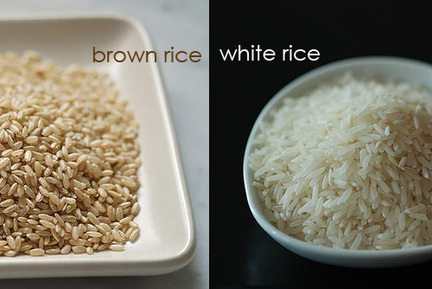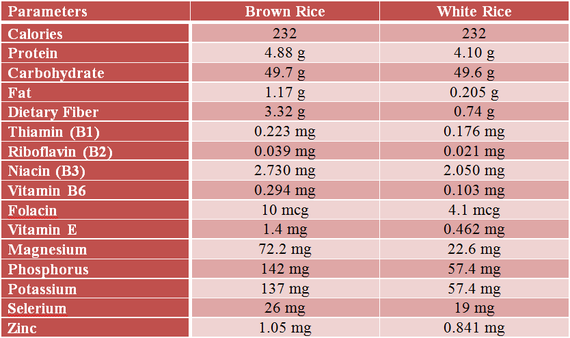by Leo Galland, M.D.
The holidays came and went, and now we are here again:
The mid-winter bulges and blahs. From the holiday treats that you want to burn off, to the frosty weather that keeps you indoors, chances are everything has conspired lately to make you feel heavier and sluggish at times.
Now it's time to turn the tables and make things work in your favor, to help you improve your mood, gain energy and lose weight.
As I will explain, it's about the remarkable weight-loss hormone called leptin. And so you can get started right away, I have included plenty of links for free recipes, resources and more information.
If you have tried restrictive diets but failed to make the scale budge, you know there is more to the weight-loss equation than calories taken in minus calories used.
Chances are your weight problem is not a matter of will or discipline, but a hormonal imbalance. While many still think that losing weight is simply about willpower, eating less and exercising more, the latest research on obesity indicates the problem is far more complex, involving many factors.
One key area of obesity research focuses on how the hormone leptin influences the body's ability to shed excess pounds. What could a hormone have to do with weight loss?
According to the latest research, leptin plays an important role in appetite control, metabolism and weight loss. It is your body's natural weight control mechanism. And the great thing about leptin is that it is produced naturally in the body.
Leptin Regulates Metabolism And Appetite
- It lets your brain know how much fat is in your body. As leptin levels rise, your appetite diminishes. As leptin levels fall, your appetite increases.
- It regulates the rate of fat breakdown. As leptin levels rise, your metabolic rate increases. As leptin levels fall, your metabolism slows.
The number of calories you burn is regulated by thermogenesis, a process in which the body makes heat, mainly in the muscles. According to recent research from Monash University in Australia, the hormone leptin can substantially increase thermogenesis, helping to burn fat.
Leptin Resistance
The body doesn't always listen to the leptin message and leptin resistance occurs. The leptin signal isn't being heard, so it cannot stimulate your metabolism or suppress your appetite. Leptin resistance can make losing weight very difficult if not impossible.
The body doesn't always listen to the leptin message and leptin resistance occurs. The leptin signal isn't being heard, so it cannot stimulate your metabolism or suppress your appetite. Leptin resistance can make losing weight very difficult if not impossible.
What causes leptin resistance? The typical modern lifestyle contributes to leptin resistance; fast food, little or no exercise, too much stress and not enough sleep. Read my article The Standard American Diet (SAD) to learn more about the alternative to the typical lifestyle.
For example of what can impact leptin, research done at the Laval University in Quebec found that 7-8 hours of sleep each night, on average, was associated with relatively higher levels of leptin. In contrast, getting less sleep meant lower levels of leptin and higher body mass index in the study.
Making Leptin Work So You Can Lose Weight
Unfortunately most doctors aren't yet fully aware of leptin resistance, or the way to combat it with nutrition and lifestyle.
Unfortunately most doctors aren't yet fully aware of leptin resistance, or the way to combat it with nutrition and lifestyle.
But my experience practicing nutritional medicine and my exploration of the scientific research provided me with unique insights into how to make leptin work and help people lose weight.
The goal of my program is to make leptin work properly and help you lose weight. It includes changes such as switching to a healthy eating plan with recipes that feature a combination of inflammation-fighting foods, getting enough sleep and reducing stress.
Using the nutritional guidelines I provided, my son Jonathan Galland created meal plans and recipes with flavors inspired by his time living in Italy and Japan. We have been very gratified by the enthusiastic response from our readers about the food.
Once you make this change -- adding the right fruits and vegetables, nuts and seeds, and protein sources, and cutting back on sugar and unhealthy fats -- you'll notice a remarkable change. Not only will you feel better and look better and find the pounds dropping almost effortlessly, but you'll also stop craving unhealthy foods.
Increase Your Resting Metabolic Rate
It's well known that exercise burns calories. In addition, regular exercise stimulates the activity of fat-burning enzymes. The exciting news is that the hormone leptin also stimulates these enzymes, which can increase your metabolic rate even when you're not exercising. This is important because for most people, the resting metabolic rate accounts for two-thirds of the total number of calories they burn each day.
It's well known that exercise burns calories. In addition, regular exercise stimulates the activity of fat-burning enzymes. The exciting news is that the hormone leptin also stimulates these enzymes, which can increase your metabolic rate even when you're not exercising. This is important because for most people, the resting metabolic rate accounts for two-thirds of the total number of calories they burn each day.
Five Steps To Increasing Metabolism:
1. Maximize flavor and nutrition. Choose food that give you the most flavor and nutritional value for the calories you consume. These foods are rich in one or more of the dietary elements that help your metabolism such as vitamins, minerals, phytonutrients, fiber, and Omega-3 fatty acids. Foods with appetite-satisfying flavor and lots of nutrition top our list, such as blueberries, tomatoes, ginger, onions and fresh herbs.
1. Maximize flavor and nutrition. Choose food that give you the most flavor and nutritional value for the calories you consume. These foods are rich in one or more of the dietary elements that help your metabolism such as vitamins, minerals, phytonutrients, fiber, and Omega-3 fatty acids. Foods with appetite-satisfying flavor and lots of nutrition top our list, such as blueberries, tomatoes, ginger, onions and fresh herbs.
Get a selection of my favorites here List of Healthy Food Choices.
2. Benefit from Omega-3 Oils. Omega-3 essential fatty acids are essential to the healthy functioning of the body and brain. Omega-3s help heal inflammation as well as promoting a wide range of cellular activities, and improving or preventing depression, Alzheimer's disease and other disorders. Plant sources of Omega-3s include: ground flax seed, walnuts, and beans -- especially navy, kidney and soy. Animal sources include fish, especially oily cold-water fish such as salmon or tuna.
3. Up Your Fruit and Veg Servings to 9 or 10 a Day. Find delicious ways to incorporate fruits and vegetables into every meal. Choose those fruits and vegetables with deep colors and intense flavors that reflect their high content of anti-inflammatory phytonutrients, like carotenoids and flavonoids. The deepest red and blue flavonoids belong to a subgroup called anthocyanins, found in the jewel-like colors of blueberries, cherries and pomegranates.
4. Skip the Artificial Sweeteners. The use of artificial flavors and sweeteners deprives you of the potent anti-inflammatory phytonutrients found in herbs, spices and naturally sweet fruits. Studies show that artificial sweeteners interfere with weight loss. So steer clear of these sugar substitutes and enjoy fruit, fruit juice and fruit concentrates for their flavor and nutrition. A recent editorial in the Journal of the American Medical Association (JAMA) also raised concerns about the use of artificial sweeteners. See more in my article "Artificial Sweeteners, Not So Sweet."
5. Enjoy Healthy Snacks and Desserts. Snacks satisfy hunger, and desserts add fun and satisfaction to a meal. Indulge, but in healthy choices only. Enjoy delicious snacks such as crunchy walnuts or almonds, and dessert treats made from fruit and yogurt that will excite your palate while keeping you satisfied.
In addition to weight loss, the important role that the leptin hormone plays in maintaining health is still being discovered. For a look at leptin and the brain, read my article: "Leptin Fights Alzheimer's Disease."






 Certain foods in the western diet actually lead to areduction in nutrient absorption.
Certain foods in the western diet actually lead to areduction in nutrient absorption.



 Bullet Point #1:
Bullet Point #1:

 Typical traits on a Mesomorph:
Typical traits on a Mesomorph: Typical traits of an Endomorph:
Typical traits of an Endomorph: